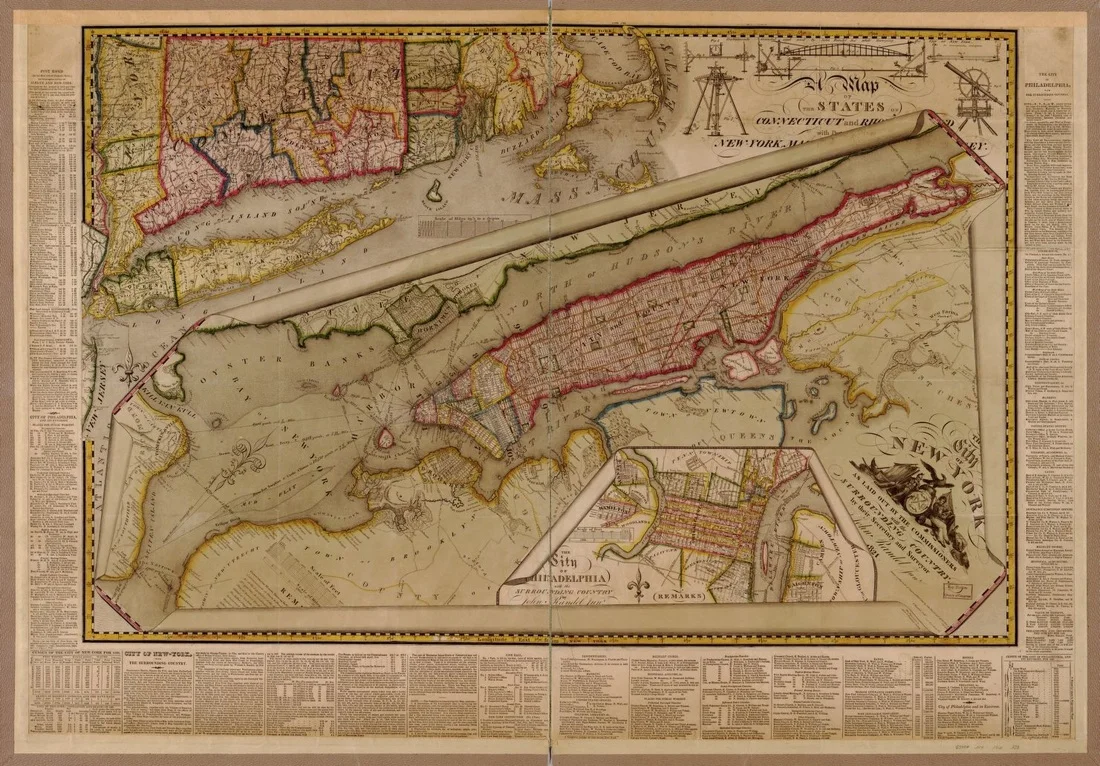Myth # 4: The Grid Plan Created Manhattan’s Small Lots
By Jason M. Barr with Gerard Koeppel
In 1894, noted architect Ernest Flagg voiced a popular belief about Manhattan’s lot sizes: “The greatest evil which ever befell New York City was the division of the blocks into lots of 25 x 100 feet... for from this division has arisen the New York system of tenement-houses, the worse curse which ever afflicted any great community.”
Flagg was lamenting that builders chose not to erect housing on larger lots, which, he argued, would have alleviated over-crowding and disease. While he was not commenting on the grid plan per se, it is easy to see how people have come to confuse Manhattan’s small lots as emanating from the plan itself. Flagg’s strong implication was that there was a direct attempt by city leaders to divide lots into regular configurations. Today the common perception remains that the small lots were a result of the plan. But, in fact, the grid had nothing to do with it.
Myth #3: Aaron Burr
By Gerard Koeppel with Jason M. Barr
It could be said that Aaron Burr, the baddest boy of early American democracy, is responsible for the famous Manhattan street grid. In a backhanded way — a way he surely would appreciate — he is.
But, like a perverse Madame de Pompadour, the deluge of orderly streets came after him, entirely without his input while he was laying low in Europe.
Myth #2: The Commissioners as Visionaries
By Gerard Koeppel with Jason M. Barr
Aside from their map, the only record the commissioners left for posterity was an eleven-page document outlining the basics of the plan that gridded Manhattan from North (now Houston) to 155th Streets. The document, dubbed “Explanatory Remarks,” explains little of the commissioners’ thinking. Their personal writings practically ignore their work. Over the generations, great intent has been ascribed to the commissioners for which there is no evidence. Analysis of the commissioners’ actions shows that the grid plan was not a “plan” so much as a convenience to satisfy a deadline. That is, not a plan but rather a “rush job” because the commissioners demonstrated little interest in their responsibilities until the final months of their four-year term. Manhattan’s future was sealed with scarcely a discussion.
Read MoreMyth #1: “Randel’s Matrix”
By Gerard Koeppel with Jason M. Barr
Popular wisdom has it that the grid plan was created by John Randel, Jr. In truth, it is not Randel’s plan but the plan decided on by the commission charged with coming up with a future street plan for the expanding city. The commissioners employed Randel as their chief surveyor to make surveys as they directed, then to draw the map of the plan. Further, the great grid plan didn’t even originate with the commissioners: they stole it from a smaller, mostly unrealized land-parceling plan from two decades earlier.
Read MoreThe Manhattan Street Grid Plan: Misconceptions and Corrections
By Jason M. Barr and Gerard Koeppel
The Manhattan street grid plan of 1811 — both figuratively and literally — defines the city. It has created its identity while prompting continuing debate about whether it’s the “greatest grid” or “one of the worst city plans.” Despite the endless fascination after 200 years and counting, the grid’s history and its effect on Gotham are still not fully understood. We aim to correct the record. Here, we introduce some key misconceptions and their corrections; in eight monthly installments, we will discuss each one in more detail.
Read More









